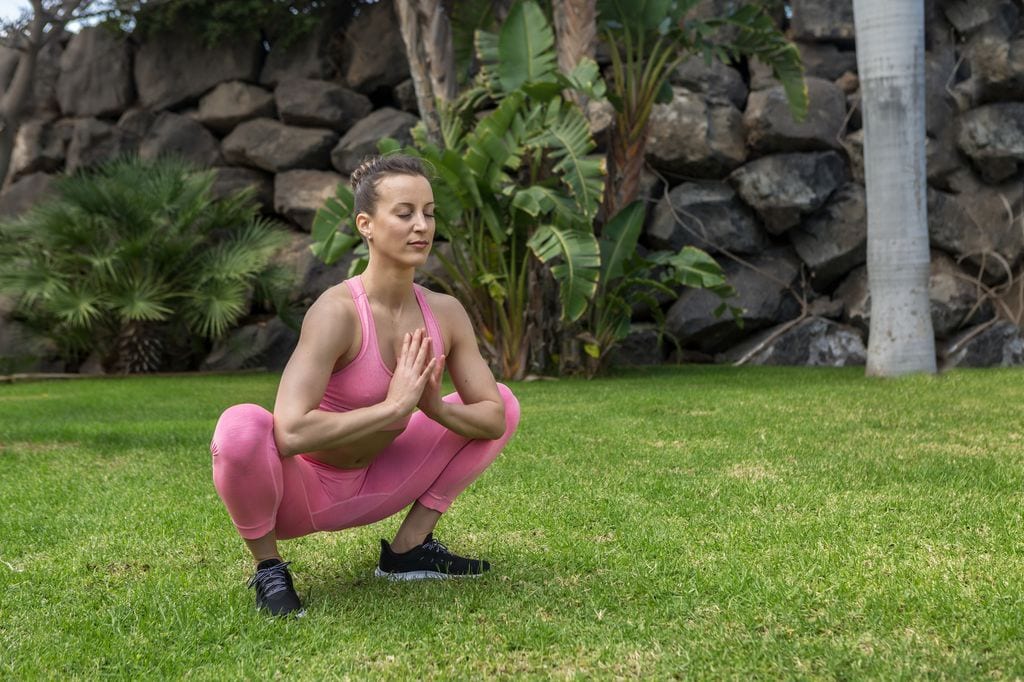It is also known as the garland pose and this asana can be a real challenge for Westerners, since we are not used to squatting. However, it is a yoga posture highly recommended, especially for womensince it opens the pelvic area and strengthens the legs. As we say, malasana It is a posture focused mainly on opening the hipsbut its benefits go much further. “This posture helps us improve our digestion process, brings calm to our body and mind, strengthens our thighs and ankles, as well as relieves possible tension in the lower back,” he tells us. Sara Garcia (@sarayoga.journey), Vinyasa Yoga Teacher.
The truth is that this is a position that can cost you at first, since involves many joints and muscle groupsalthough the expert does not hesitate to make a nuance about this: the perception of the difficulty of a yoga posture depends on our level of practice. And it all depends on whether we have an advanced practice or, on the contrary, we have just started practicing yoga.
It is a posture focused mainly on opening the hips, but it has many other benefits
How to do it step by step
- To start practicing it, we will start standingwith the toes facing slightly outward. This is what will allow us to externally rotate our hips, in order to work on their opening.
- After, we will bend our knees until we ideally bring our hips towards the ground, but without touching the ground.
- If we barely have flexibility in our hips, our heels will lift off the ground (we will see modifications later). Ideally, we will have enough opening to be able to maintain our heels resting on the ground.
- The distance between both feet It will vary depending on the student’s hip opening. The more distance there is between our feet, the more comfortable it will be for the student and vice versa.
- Next, We will join our palms and We will take them towards the center of the chest.
- The elbows will be at the height of the kneesso these will slightly push your knees outward.
- We will seek to maintain our upright spineavoiding its curvature.
- We will relax the muscles of the face and ideally we will breathe for 30 seconds in this position.
- Posture should be stable and comfortableThat is, we can hold it for 30 seconds breathing calmly through our nose. Our breathing should be calm, ideally our inhalation and exhalation should last the same time.
- To get out of the posturefirst we will separate our hands and slowly begin to stretch our legs again.
“This posture, like many other yoga asanas in which we work on opening the hips, is highly recommended for pregnant women”, indicates the expert.
Benefits of this asana
- Strengthens the muscles of the legs and buttocks.
- Stretches and tones the muscles of the back and ankles.
- Helps improve digestion and relieve constipation.
- Prevents hip problems
Its practice will help us gain flexibility and strength, since we are also stretching our ankles and thighs.
Are there different variants?
As the yoga instructor explains to us, if the heels are raised off the ground due to a lack of opening in the hips, we can put a blanket right under our heels in order to gain enough height to be able to keep our back upright and maintain our posture. “This will help us gain flexibility and strength, since we are also stretching our ankles and thighs,” he tells us.
Also, add that if we don’t have a blanket, we can use blocks under the heels or any other object that can give us height to be able to support our heels and be able to maintain the posture for a few breaths.
“The more we practice malasanathe fewer modifications we will need, since our body will gain strength and flexibility more breaths needed to maintain the posture each time. Ideally we will practice this posture regularly every week, 3 days per week, 5 repetitions of 30 seconds. If this requires a lot of effort at the beginning, we can start with 10 secondsuntil gradually increasing to 30 seconds,” he recommends.
What are its possible contraindications?
Finally, we have asked the expert if there are any contraindications when performing this asana. “It is not recommended to practice malasana or the garland pose when we have problems in the areas of our body that we are using to maintain the posture, that is: knees, lower back, hips and ankles”, he points out. And concludes by reminding us that even if it is the first time you are practicing malasanayou should not notice any discomfort in any of these areas, the only thing you should notice is that you are working these areas of your body, but We should never feel pain.

